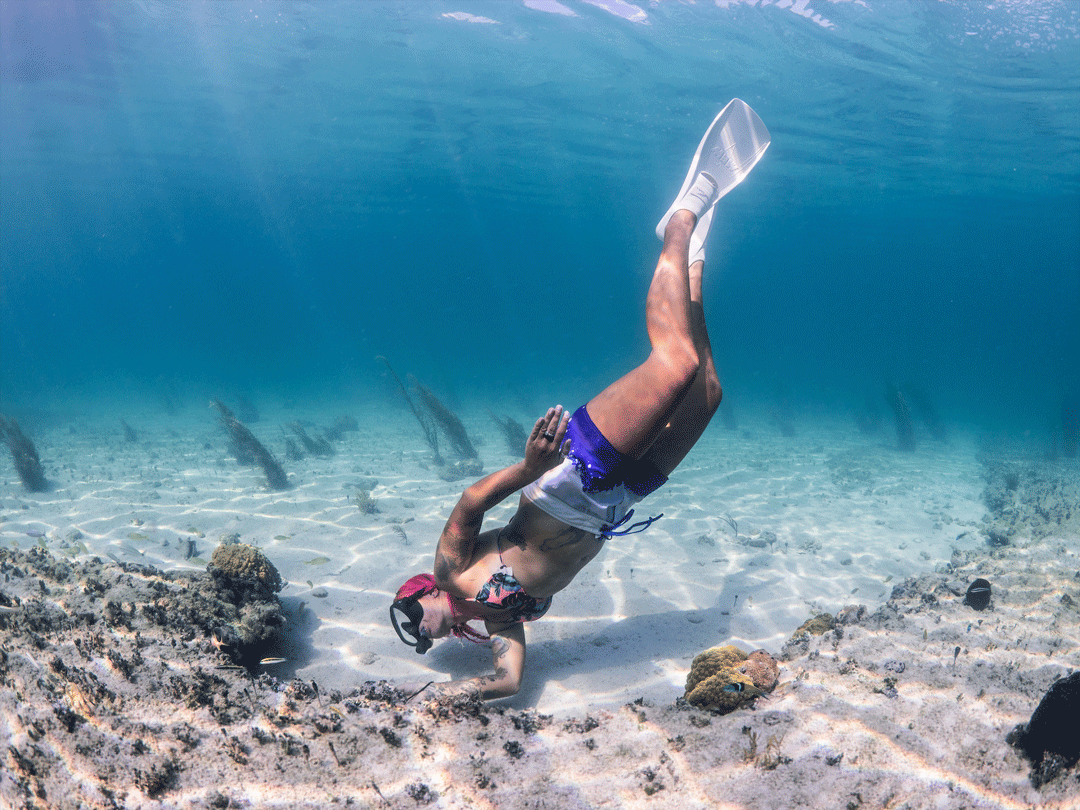Capture, work-up, repeat- A day in the life of a SharkLab intern
The plane was boarded and it was time for our flight to Bimini. I peered down upon crystal-clear blue water and thought about the adventure I was in for. The past three years of my life, I have travelled around a variety of countries, each with their own unique species of flora and fauna I have had the opportunity to work with. I decided to come intern at the Shark Lab to gain even more field research experience.
We were given instructional classes by the staff the first week to help train us for tasks we would be doing out in the field. These included boat class, knot tying, and my personal favourite, shark handling. This class consisted of each intern demonstrating the proper way to hold a baby lemon shark. Being able to properly hold a shark is essential for capturing and performing work-ups on the shark.
There are a variety of capture methods used depending on the target species. To catch nurse sharks, the technique we use is called “nurse wrangling”, where we take a skiff out to reef ledges. Our goal is to find a young nurse shark typically between 50-80 centimetres total length that we can bring back to the pen to work-up. If we do find one, someone will free dive to the ledge, place their hand between the gills and pectoral fin of the shark and swim it up to the surface. It will then be placed in a tub of water and taken to the pen at the lab.

Scanning the reef ledges for juvenile nurse sharks. Photo © Sophie Hart | Bimini Biological Field Station Foundation
Stingray capture is definitely a “practice makes perfect” kind of a job. It requires one person to slowly drive a skiff along the mangroves and to have 3-4 people standing on the bow of the boat scanning for stingrays. If a ray is spotted, the driver needs to steer towards the mangroves so that the others can jump in with dip nets to corner and capture it. Often, the ray will bolt or make circles as the skiff is attempting to follow it. The rays’ colouration provides a great camouflage with the murky mangrove waters, so spotting can sometimes be quite tricky. If a capture is successful, we place it in a giant tub filled with water and drive it to the pen to be worked up a few days later.
Gillnetting is the best way to collect juvenile lemon sharks for research. The gillnets are strung across the pond from one side to the other, with two people taking a bucket and walking along the net scanning for sharks. We do this every 15 minutes over the course of a few hours. If a shark is caught we rush over to it to quickly release it from the net, place it in the bucket and take it to the pen. If the capture is successful, we will perform the work-up within a few days. Until then, we will gill net fix! The holes are often large and fixing them requires a ton of mono and sitting in the sun making numerous fisherman’s knots, over and over…..
While these tasks can be difficult and tiring, they are all an important part of field research and are essential to better understanding elasmobranch species. Each day at the lab we learn something new and are able to continuously apply the skills we learn throughout the course of the internship. I can safely say I have learned so many techniques that will help me to become a better field scientist for any future research that I pursue.
